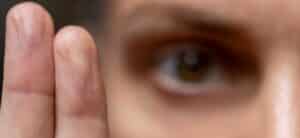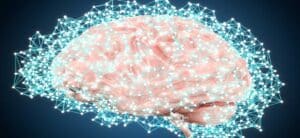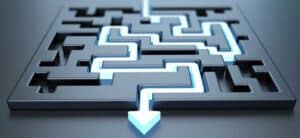
What is MASC 2? A Parent’s Guide to Child Anxiety Assessment
Anxiety disorders impact 20% of today’s youth, making them one of the most common mental health challenges children and adolescents face. The MASC 2 is a vital tool to assess and understand anxiety-related concerns in young people.
Children with severe anxiety often go untreated. Less than one-third receive the help they need. The MASC 2’s complete assessment includes 39 questions that assess physical symptoms, social anxiety, separation concerns, and harm avoidance. Research shows this tool’s reliability in identifying anxiety disorders among children aged 7 to 17.
Parents can find essential information in this piece about the MASC 2 assessment and learn how to interpret their child’s results with healthcare providers effectively.
Understanding the MASC-2 Assessment Basics
The Multidimensional Anxiety Scale for Children 2nd Edition (MASC 2) marks a major step forward in assessing anxiety in young patients. Dr. John S. March, a leading expert in childhood anxiety disorders, developed this tool to help clinicians and parents identify anxiety symptoms in children.
What is the MASC-2 questionnaire?
The MASC 2 serves as a detailed multi-rater tool that measures anxiety symptoms’ range and severity in children and adolescents [1]. This 50-item questionnaire looks at emotional, cognitive, physical, and behavioral symptoms in various anxiety areas [2]. The assessment tracks scores in several key areas:
- Physical symptoms
- Social anxiety
- Separation anxiety/panic
- Harm avoidance
On top of that, it has a Generalized Anxiety Disorder (GAD) Index that helps distinguish between children with anxiety disorders and the general population [3]. The questionnaire enhances the diagnostic process and helps identify anxiety-prone youth early while tracking how well treatments work [4].
Age range and appropriate applications
The MASC 2 works best for children and adolescents between 8 and 19 years of age [5]. Mental health professionals find this tool useful in three main ways. It spots anxiety symptoms that might go unnoticed. It supports diagnosis when combined with other clinical data [1]. The MASC 2 also lets clinicians track progress by using it throughout treatment [6].
Differences between parent and child versions
The MASC 2’s multi-informant approach uses two similar forms: the self-report (MASC 2-SR) for youth and the parent report (MASC 2-P) for caregivers [3]. Both versions share similar content and scales, with one key difference – the child’s version uses “I” while the parent’s version refers to “my child” [2]. This two-way view provides valuable insights since children know their inner thoughts and feelings better than their parents can observe [4].
How long does the assessment take?
The MASC 2’s practical advantage lies in its quick completion time of about 15 minutes [7]. Parents and children can take their forms online or on paper [1]. The questionnaire needs minimal training and is available in many clinical and educational settings [2].
Preparing Your Child for the MASC-2 Assessment
Good preparation helps children face anxiety assessments confidently. Parents who understand the MASC 2 can better prepare their child for this vital evaluation.
Talking to your child about anxiety assessment
Open and clear communication is the foundation of preparing a child for the MASC 2 assessment. Parents should explain the process in simple words that match their child’s age. The assessment helps find ways to make them feel better, build confidence, and do better at school [8]. Being honest builds trust and reduces anxiety, so don’t sugarcoat the experience.
Listen carefully to understand your child’s feelings instead of brushing off their concerns [9]. Let them ask questions and give truthful answers. Note that children need to know the MASC 2 isn’t a “punishment” for their struggles [10]. Present it as a way to find how they learn best and feel most at ease.
Creating a comfortable environment
Your home’s atmosphere substantially affects how children feel before an assessment. Keep regular routines and reduce stress in the weeks before the MASC 2 evaluation [8]. This steady environment gives them security during what could be an anxious time.
Try relaxation techniques together, like deep breathing exercises (breathing in for three counts and out for three) or listening to calm music [9]. These methods help calm pre-assessment nerves for both children and parents. Make sure your child rests well and eats a good meal before the assessment to keep their energy steady [8].
Addressing common fears about psychological testing
Children often have wrong ideas about psychological assessments that can make them anxious. Here’s how to address these fears:
- “This isn’t a pass/fail test” – Let them know there are no wrong answers on the MASC 2, and they won’t get a grade [10]
- “You don’t need to study” – Tell them they don’t need to prepare [10]
- “It might even be interesting” – Some parts of the assessment could be fun [10]
The goal is understanding, not judgment. Your calm and supportive presence throughout gives vital support [8]. When you acknowledge their emotions and show you understand their concerns, your children can approach the MASC 2 assessment more confidently with less worry.
The MASC-2 Assessment Process Step-by-Step
The MASC 2 assessment helps families understand anxiety symptoms from different points of view. Parents and children can feel more confident when they know what to expect during this process.
Original consultation with the mental health professional
The process starts when a clinician meets the family to explain the MASC 2’s purpose and its role in the overall assessment [11]. The mental health professional builds a connection with both the child and parent. The clinician explains what everyone can expect and how the results will help determine diagnosis and treatment plans [1]. This first step builds trust and opens communication channels between everyone involved.
Completing the parent questionnaire
The MASC 2-P form lets parents share what they notice about their child’s anxiety symptoms [1]. Parents can fill out the 50-item questionnaire in two ways:
- Online format – The MHS Online Assessment Center makes it quick and easy to process results [3]
- Paper-and-pencil format – Some parents prefer this traditional method [1]
Parents need about 15 minutes to complete the form [7]. The questions cover their child’s emotional, cognitive, physical, and behavioral symptoms of anxiety [2]. Their answers give a great picture of behaviors that children might not mention themselves.
How children complete their portion
Children fill out their own version called the MASC 2-SR (self-report) form. This matches the parent version but asks questions from the child’s point of view [11]. The 50 questions help understand how children experience anxiety in different ways [2]. This self-assessment reveals thoughts and feelings that parents or clinicians might not see otherwise. Children can choose between online or paper formats, and most finish in about 15 minutes [7].
Follow-up discussions with the clinician
The clinician creates detailed reports after analyzing both questionnaires [6]. These reports show scores through numbers and graphs [1]. Parents review the findings with the clinician, and when appropriate, the child joins the discussion. The clinician suggests treatment options based on elevated scale scores [4]. Teams can use the MASC 2 several times during treatment to see how well it works [6].
Interpreting MASC-2 Results with Your Child’s Provider
Parents who complete the MASC 2 assessment face a significant task to understand their child’s mental health results. Your child’s provider will give a clear picture of what these results mean and recommend intervention if needed.
Understanding the scoring system
The MASC 2 uses T-scores that compare your child’s answers to other children of the same age and gender. These standardized scores follow specific guidelines:
- Average (T-scores below 60): Typical anxiety levels
- Slightly Elevated (T-scores 60-64): Mild anxiety concerns
- Elevated (T-scores 65-69): Significant anxiety symptoms
- Very Elevated (T-scores 70+): Severe anxiety symptoms [12]
The assessment calculates an Anxiety Probability Score that shows how likely a child has one or more anxiety disorders based on key anxiety scales [4]. This score helps doctors decide if the child needs more clinical attention.
Key anxiety dimensions measured
The MASC 2 reviews anxiety in multiple ways and creates scores for 11 distinct scales and subscales [4]. These are the foundations of the assessment: Separation Anxiety/Phobias, Generalized Anxiety Disorder (GAD) Index, Social Anxiety (with Humiliation/Rejection and Performance Fears subscales), Obsessions & Compulsions, Physical Symptoms (with Panic and Tense/Restless subscales), and Harm Avoidance [6].
What high scores in different areas might mean
High scores in specific areas help learn about your child’s anxiety type. To cite an instance, high scores on the Separation Anxiety/Phobias scale show fears about being alone or in certain places [4]. High GAD Index scores point to too much worry about future events [12]. Social Anxiety scores reveal fears of embarrassment or performance anxiety [12]. The Physical Symptoms scale shows how anxiety appears through panic symptoms or feeling tense [13].
When additional assessments might be needed
Your child might need more assessments if the MASC 2 shows by a lot elevated scores (T-scores above 65) [14]. Different answers between parent and child often need deeper investigation [2]. The MASC 2 works as the original screening tool, so doctors might suggest complete clinical interviews to confirm diagnoses [13]. This assessment helps identify specific anxiety symptoms that shape treatment plans [4].
Conclusion
The MASC 2 helps us learn about childhood anxiety and gives parents and healthcare providers a great way to support children’s mental health. Anxiety assessment might feel overwhelming at first. This complete tool gives a clear picture of what children are going through.
Note that the MASC 2 is just one part of the overall evaluation process. Professional interpretation of this multi-dimensional assessment helps identify specific anxiety patterns. These patterns then guide treatment strategies that work. On top of that, it lets us track a child’s progress through regular check-ups to ensure they get the right support as they grow.
Managing childhood anxiety takes time and understanding. Parents who know how MASC 2 works can better support their children’s mental health needs. They can also provide the emotional support their children need during evaluation and treatment.
FAQs
Q1. What is the MASC 2 assessment and what does it measure?
The MASC 2 (Multidimensional Anxiety Scale for Children 2nd Edition) is a comprehensive questionnaire that assesses anxiety symptoms in children and adolescents aged 8 to 19. It measures various dimensions of anxiety, including physical symptoms, social anxiety, separation anxiety, and harm avoidance.
Q2. How long does it take to complete the MASC 2 assessment?
The MASC 2 assessment typically takes about 15 minutes to complete. Both the parent and child versions can be administered either online or in a traditional paper-and-pencil format.
Q3. How are MASC 2 results interpreted?
MASC 2 results are interpreted using T-scores, which compare a child’s responses to those of other children of the same age and gender. Scores below 60 are considered average, 60-64 slightly elevated, 65-69 elevated, and 70+ very elevated, indicating varying levels of anxiety symptoms.
Q4. Is the MASC 2 a reliable tool for assessing childhood anxiety?
Yes, the MASC 2 is recognized as a valid and reliable anxiety scale. It has demonstrated excellent internal consistency and has been proven effective in distinguishing between children with and without anxiety disorders.
Q5. How can parents prepare their child for the MASC 2 assessment?
Parents can prepare their child by explaining the purpose of the assessment in simple terms, creating a comfortable environment, and addressing common fears about psychological testing. It’s important to emphasize that there are no wrong answers and that the goal is to understand how the child feels to provide better support.
References
[1] – https://storefront.mhs.com/collections/masc-2
[2] – https://pmc.ncbi.nlm.nih.gov/articles/PMC3858516/
[3] – https://paa.com.au/product/masc-2/
[4] – https://documents.acer.org/MASC-2-Assessment-Report-Parent-Sample.pdf
[5] – https://www.pearsonclinical.ca/store/caassessments/en/Store/Professional-Assessments/Personality-%26-Biopsychosocial/Multidimensional-Anxiety-Scale-for-Children-|-Second-Edition/p/P100008171.html
[6] – https://cdn.mhs.com/mhsdocs/Marketing_Files/ClinEd/social/MASC2_Brochure_21_July_2023_Social.pdf
[7] – https://www.wpspublish.com/masc-2-multidimensional-anxiety-scale-for-children-2nd-edition
[8] – https://www.fmcdrbarnett.com/better-health-blog/8-helpful-tips-for-preparing-your-child-for-a-disorder-assessment
[9] – https://www.nhs.uk/mental-health/children-and-young-adults/advice-for-parents/anxiety-in-children/
[10] – https://www.understood.org/en/articles/talking-to-your-child-about-getting-evaluated
[11] – https://pmc.ncbi.nlm.nih.gov/articles/PMC5988233/
[12] – https://paa.com.au/wp-content/uploads/2018/07/MASC-2-Comparative-Report_Sample.pdf
[13] – https://documents.acer.org/MASC-2-Assessment-Report-Self-Report-Sample.pdf
[14] – https://pmc.ncbi.nlm.nih.gov/articles/PMC7062240/






















